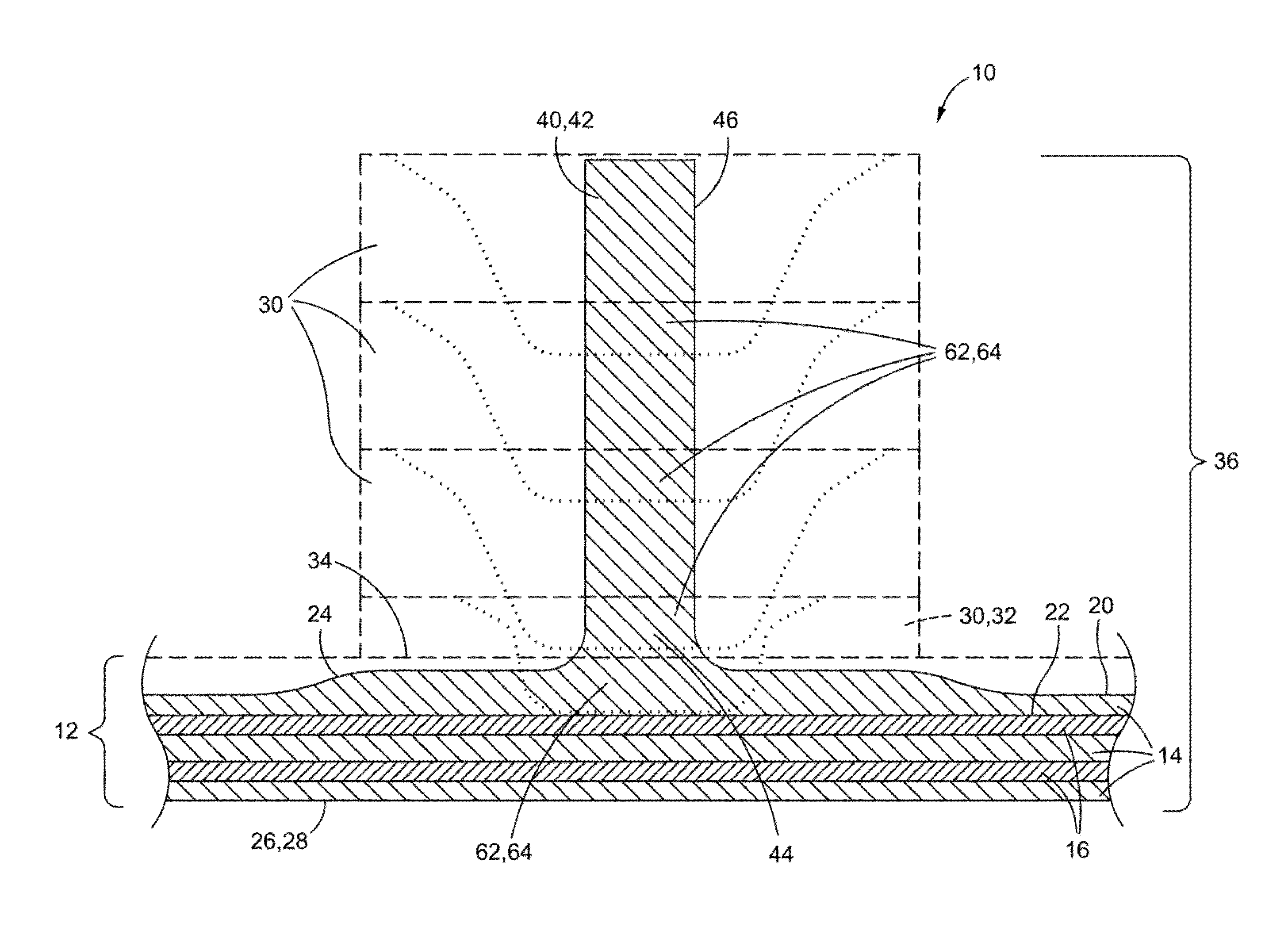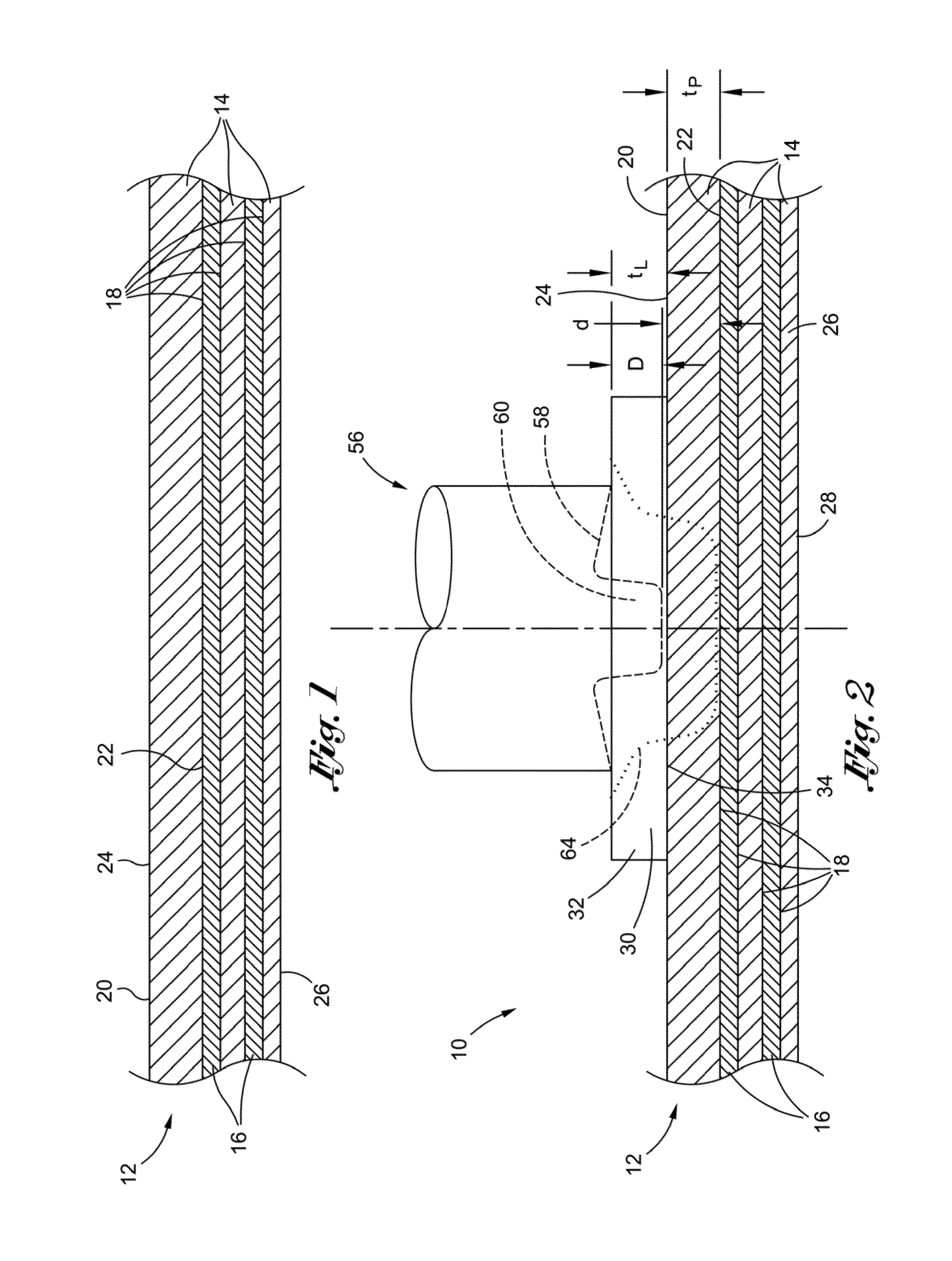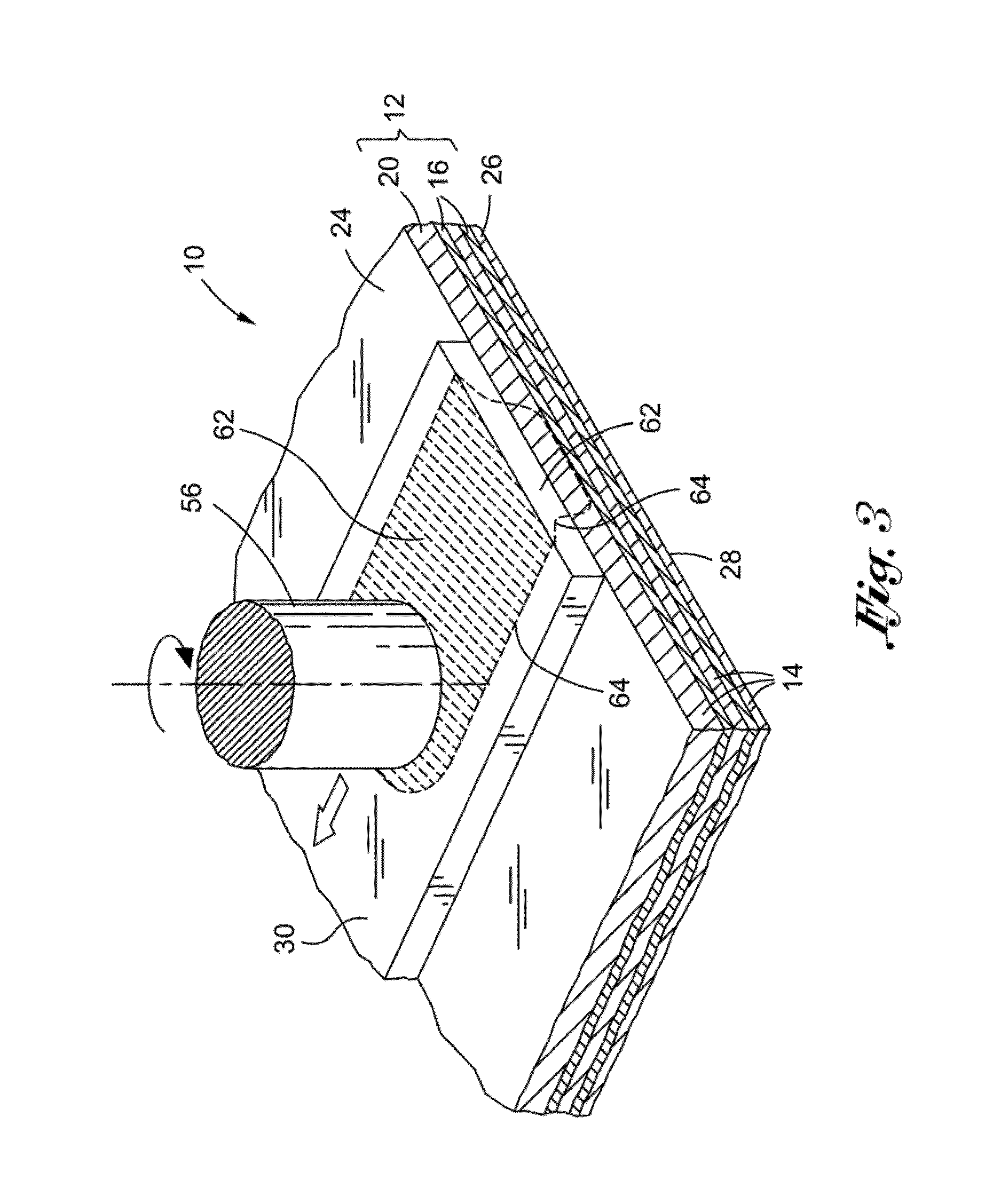System and method for integrally forming a stiffener with a fiber metal laminate
a technology of fiber metal laminate and stiffener, which is applied in the direction of valves, soldering devices, welding devices, etc., can solve the problems of increasing operating and maintenance costs, increasing the number of fasteners, and time-consuming and laborious processes, so as to reduce stress concentrations in the skin, prolong the service life of the structural assembly, and improve the effect of strength and weigh
- Summary
- Abstract
- Description
- Claims
- Application Information
AI Technical Summary
Benefits of technology
Problems solved by technology
Method used
Image
Examples
Embodiment Construction
[0048]Referring now to the drawings wherein the showings are for purposes of illustrating preferred and various embodiments of the disclosure only and not for purposes of limiting the same, shown in FIGS. 1-20 is a system and method for fabricating a unitized assembly 10 comprising a fiber metal laminate 12 and an integrally formed substructure element 40. In one embodiment, the unitized assembly 10 may be fabricated by depositing at least one or, more preferably, a plurality of additive layers 30 such as metallic strips onto the fiber metal laminate 12.
[0049]In the embodiments illustrated in FIGS. 1-13, the additive layers 30 may be deposited onto the fiber metal laminate 12 using friction stir welding to create a friction stir welded preform 36. Substructure elements 40 such as stiffeners 42 may be machined into the friction stir welded preform 36 to create the unitized assembly 10. In an alternative embodiment illustrated in FIGS. 14-17, a stock member 70 such as a metal plate ma...
PUM
| Property | Measurement | Unit |
|---|---|---|
| thickness | aaaaa | aaaaa |
| thickness | aaaaa | aaaaa |
| thickness | aaaaa | aaaaa |
Abstract
Description
Claims
Application Information
 Login to View More
Login to View More - R&D
- Intellectual Property
- Life Sciences
- Materials
- Tech Scout
- Unparalleled Data Quality
- Higher Quality Content
- 60% Fewer Hallucinations
Browse by: Latest US Patents, China's latest patents, Technical Efficacy Thesaurus, Application Domain, Technology Topic, Popular Technical Reports.
© 2025 PatSnap. All rights reserved.Legal|Privacy policy|Modern Slavery Act Transparency Statement|Sitemap|About US| Contact US: help@patsnap.com



